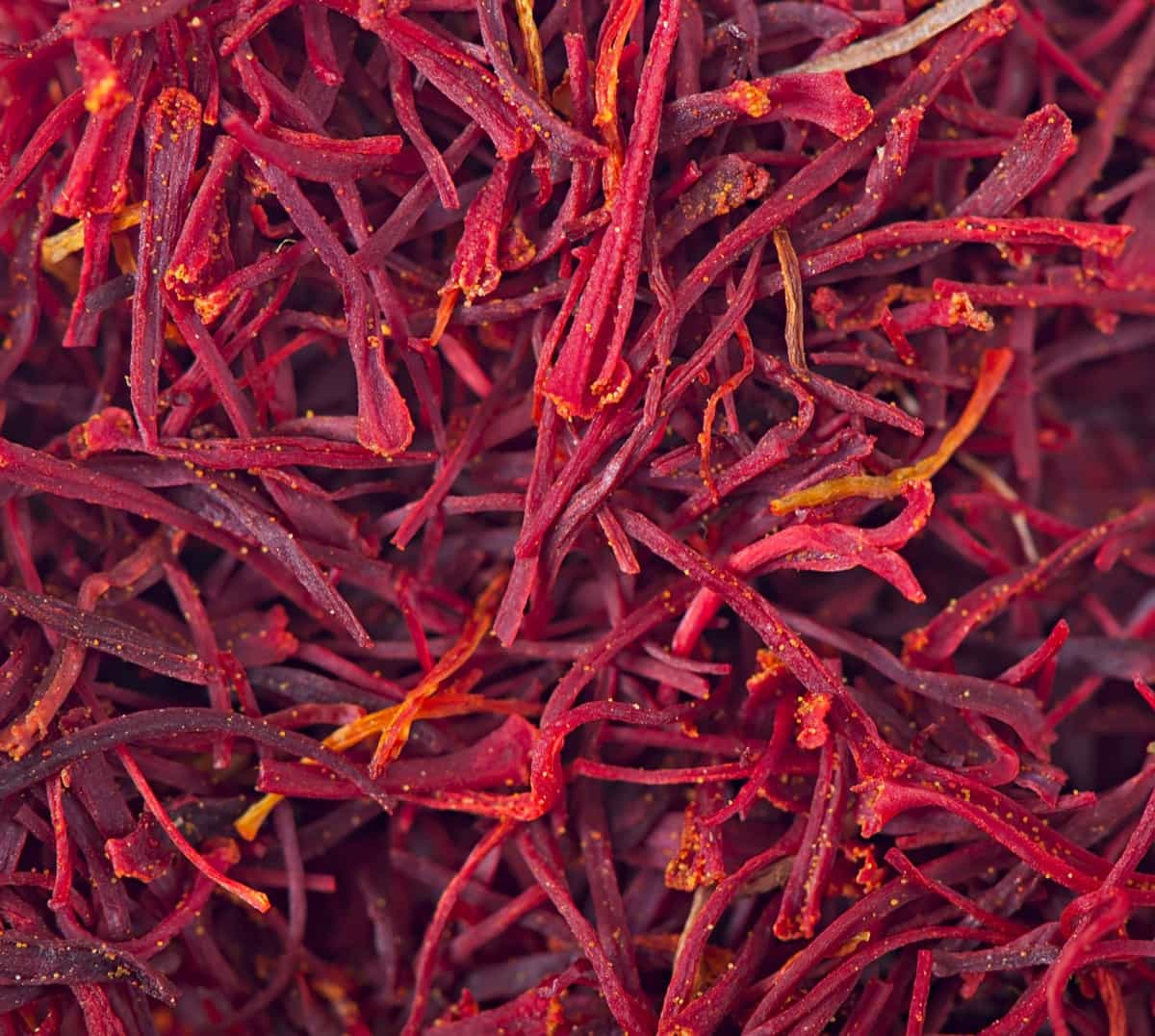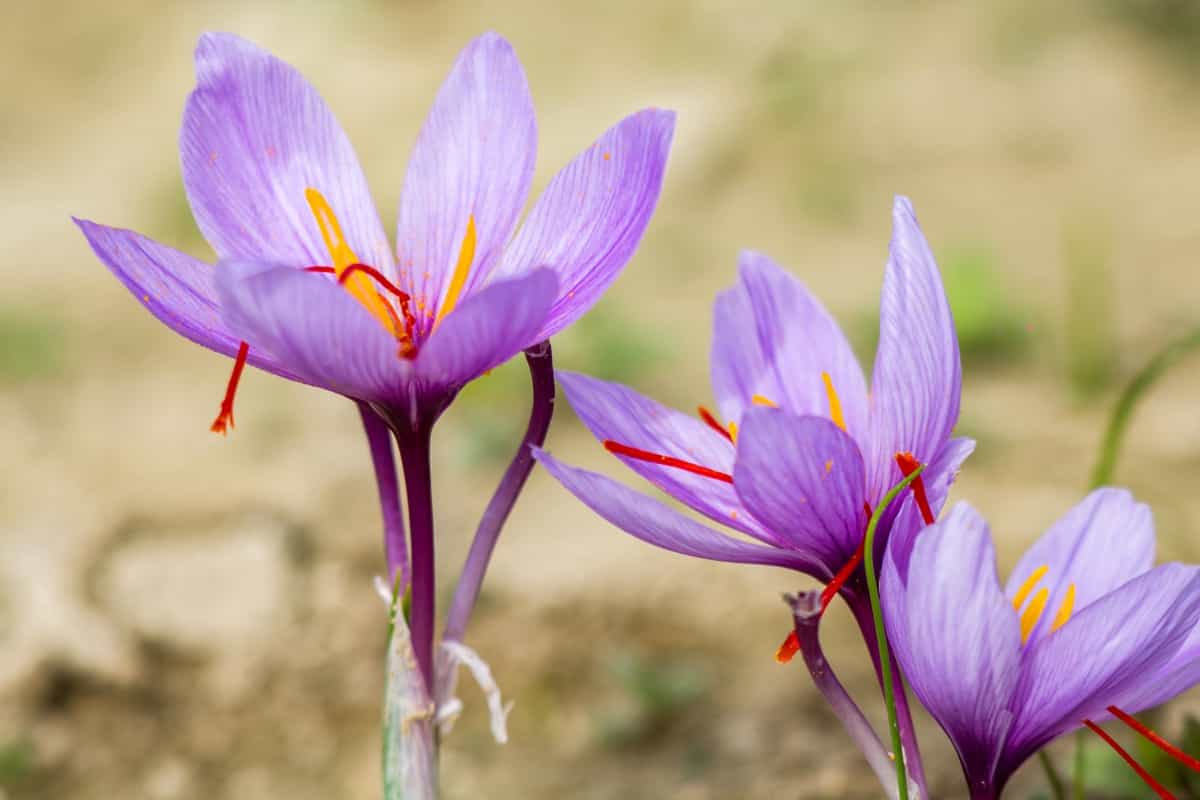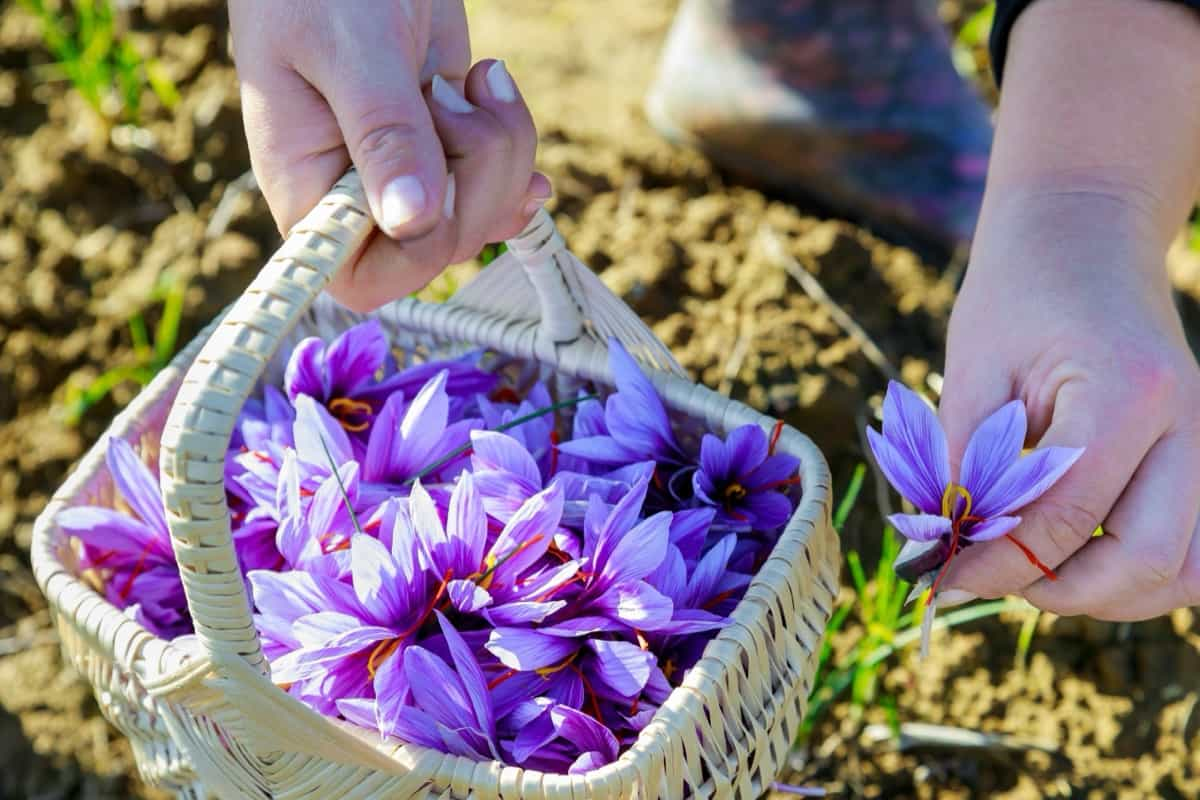Creating a Saffron farming business plan allows you to set clear goals and objectives for your venture. Whether it’s increasing production yields or expanding into new markets, having specific targets gives you something to strive towards. This labor-intensive crop requires specific conditions for optimal growth.

Saffron Farming Business Plan
Understanding the Saffron Market
The Saffron market can be complex and competitive, but with the right knowledge and strategies, you can make your mark. It’s important to recognize that Saffron is a highly sought-after spice globally. Its unique flavor profile and vibrant color make it a prized ingredient in various cuisines. This demand drives the market and presents opportunities for growers.
However, it’s essential to research the specific preferences and trends within your target market. Saffron prices can fluctuate due to factors such as supply-demand imbalances or changes in international trade policies. Staying informed about these fluctuations will help you price your products competitively while ensuring profitability.
Saffron Farming Business Overview
Saffron farming is a unique and lucrative business opportunity that has recently gained popularity. The Saffron farming business involves the cultivation of Crocus sativus plants to obtain the precious spice known as Saffron. These plants require specific conditions to thrive, including well-drained soil, plenty of sunlight, and a dry climate.
To establish a successful Saffron farming operation, it is crucial to have a comprehensive business overview in place. This includes determining your target market and understanding their demand for Saffron products. In addition to cultivation techniques and infrastructure requirements outlined earlier in this blog post, labor management also plays a main role in running a profitable Saffron farm.
Saffron Cultivation Techniques
Saffron cultivation techniques require careful attention and precision. The process starts with selecting the right location for your Saffron farm. Saffron thrives in well-drained soil, so make sure to choose a site that provides good drainage. Once you have the perfect location, it’s time to prepare the soil. When it comes to planting Saffron bulbs or seeds, timing is crucial.
Ideally, plant them in late summer or early fall to allow enough time for root development before winter dormancy sets in. Saffron plants require regular watering during their growing season but must not be overwatered as this can lead to the corms (bulbs) rotting. Drip irrigation systems are often recommended as they provide targeted watering directly to the roots while minimizing water waste.
Sourcing Saffron Bulbs and Seeds
High-quality bulbs and seeds are the foundation for successful cultivation and a bountiful harvest. When it comes to sourcing Saffron bulbs, it’s important to choose suppliers who have a reputation for providing top-notch quality. Look for established nurseries or reputable farmers who specialize in Saffron production.
In case you missed it: Project Report of 1-Acre Saffron Farming: Production Cost and Profit Analysis, Cultivation Economics

As for sourcing Saffron seeds, it’s advisable to opt for certified suppliers who can provide authentic and viable seeds. Before finalizing any supplier, do thorough research about their track record, customer reviews, and certifications. Consider contacting other Saffron farmers or joining online forums where experienced growers can recommend reliable bulb and seed suppliers.
Farm Infrastructure and Equipment
Land preparation: Start by selecting well-drained soil with good organic content. The land should receive ample sunlight, as this will directly impact the quality of your Saffron flowers. Clear any weeds or other obstructions from the field before planting.
Irrigation systems: Saffron requires a specific amount of water at different stages of its growth cycle. Installing an efficient irrigation system, such as drip irrigation or sprinklers, can help ensure optimal water distribution without wasting resources.
Harvesting tools: Handpicking each delicate Saffron flower manually would be time-consuming and inefficient. Invest in specialized harvesting tools like curved scissors that allow you to gently cut the stigmas without damaging them.
Drying facilities: Properly drying harvested Saffron strands is vital to preserve their flavor and longevity. Consider investing in drying racks or trays that provide adequate air circulation while protecting against dust and pests.
Labor and Workforce Management
As with any agricultural venture, having a skilled and reliable team is essential for the smooth operation of your farm. From planting to harvesting, various tasks require careful coordination and efficient labor allocation. In the initial stages, you may need workers to prepare the soil, plant bulbs or seeds, and set up irrigation systems. Adequate training on proper harvesting techniques should be provided to ensure high-quality Saffron production. Saffron farming has specific peak periods, such as planting season or harvest time, when extra manpower might be needed temporarily.
Financial Projections and Budgeting
By accurately forecasting your expenses, revenues, and profit margins, you can make informed decisions that will drive the growth of your venture. When it comes to financial projections, it’s important to consider factors such as the cost of sourcing Saffron bulbs or seeds, farm infrastructure and equipment investments, labor costs, marketing expenses, and potential risks in the market.
In case you missed it: How to Increase Female Flowers in Saffron: Explained in 10 Steps for More Yields and Profit

Budgeting is equally important as it helps allocate funds efficiently across different areas of your business. This includes determining how much money should be allocated for purchasing high-quality Saffron bulbs or seeds from reputable suppliers. In terms of marketing expenses, budgeting allows you to allocate resources toward promoting your Saffron products through various channels like online platforms or local markets.
Marketing and Distribution Strategies
The main aspect of marketing is understanding your target audience. Consider targeting gourmet food stores, high-end restaurants, or even luxury spas that appreciate the premium nature of Saffron. n terms of distribution channels, explore both offline and online options. Offline strategies could include forming partnerships with local specialty stores or participating in farmer’s markets to connect with customers directly.
Online platforms like e-commerce websites or social media can help broaden your reach beyond geographical boundaries. Building strong relationships with distributors can also play a significant role in expanding your market presence.
Risk Assessment and Mitigation
One common risk in Saffron farming is unpredictable weather conditions. Extreme temperatures, droughts, or heavy rains can all have detrimental effects on the growth and yield of Saffron flowers. To mitigate this risk, consider investing in climate control systems such as greenhouses or shade nets to protect your crops from adverse weather conditions. Another potential risk lies in pests and diseases that can attack Saffron plants.
Implementing integrated pest management techniques can help minimize the damage caused by insects or pathogens without relying solely on chemical pesticides. Financial risks should not be overlooked either. Unforeseen expenses or low yields could impact cash flow and profitability. Creating a detailed financial plan with realistic projections will help you anticipate potential challenges and adjust accordingly.
Regulatory Compliance and Certification
Regulatory compliance ensures that your Saffron farming business operates within the legal framework, while certifications provide a stamp of approval from industry authorities. In addition to regulatory compliance, obtaining certifications can greatly enhance the credibility of your Saffron farm.
Certifications such as organic or fair-trade demonstrate your commitment to sustainable agricultural practices and ethical sourcing. To obtain certification for your Saffron farm, you will want to meet certain criteria set by certifying bodies or organizations. By ensuring regulatory compliance and obtaining relevant certifications for your Saffron farming business plan, you not only demonstrate a commitment towards responsible agriculture but also obtain a competitive edge in the market.
Frequently Asked Questions (FAQ) on Saffron Framing Business Plan
How Do I Select the Right Location for My Saffron Farm?
Choosing an ideal location is essential for successful Saffron cultivation. Saffron thrives in areas with a Mediterranean climate characterized by hot summers and mild winters.
In case you missed it: Frequently Asked Questions About Saffron Farming

What are Some Common Challenges Faced in Saffron Cultivation?
Saffron farming comes with its own set of challenges, including diseases such as corm rot or fungal infections, which can be managed through proper crop rotation and good hygiene practices.
How Can I Source High-Quality Saffron Bulbs?
Purchase your bulbs from reputable suppliers who specialize in producing high-quality Saffron.
How Long Does It Take for The First Harvest After Planting Bulbs?
Typically, you can expect your first harvest within one year after planting.
Conclusion
Saffron farming is the process of growing and harvesting Saffron flowers to obtain one of the most expensive spices in the world. Furthermore, a well-designed Saffron farming business plan facilitates effective decision-making throughout the cultivation process. Farmers can evaluate different techniques for planting, harvesting, and processing Saffron while considering their financial implications. This enables them to make informed choices that optimize yield and profitability.
- Feed Your Flock for Less: Top 10 Tips to Save on Chicken Feed
- Ultimate Guide to Ossabaw Island Hog: Breeding, Raising, Diet, and Care
- Hatching Answers: The Top 10 Reasons Your Chickens Aren’t Laying Eggs
- Eggs and Economics: Breaking Down the Cost of Raising Backyard Chickens
- Defend Your Greens: Proven Methods to Keep Iguanas Out of Your Garden
- Ultimate Guide to Cinnamon Queen Chicken: A Comprehensive Guide for Beginners
- Ultimate Guide to California Tan Chicken: Breeding, Raising, Diet, Egg-Production and Care
- Ultimate Guide to Marsh Daisy Chicken: Breeding, Raising, Diet, and Care
- 10 Types of Chicken Farming Businesses You Can Start for Profits